If you’re standing in the aisle or scrolling through product pages wondering whether to choose Aquasure or Fleck for your next water softener, I’ve been there.
I’ve used both in real home settings and I’m here to walk you through what actually matters—performance, cost, salt usage, ease of setup, and long-term results.
Aquasure Vs. Fleck Water Softener: Quick Comparison Table
| Feature | Aquasure Water Softener | Fleck Water Softener |
| Grain Capacity | 32,000 to 64,000 grains | 24,000 to 80,000 grains |
| Iron Removal | Up to 10 ppm | Up to 6 ppm (standard units) |
| Regeneration Type | Metered Digital | Time Clock or Metered |
| Installation | DIY-friendly | Best installed by a professional |
| Digital Interface | Modern LCD screen | Basic but functional |
| Warranty | 5 years on tank | Up to 10 years depending on unit |
| Salt Efficiency | High | Moderate to high |
| Best for | Average to large households | Large households with high demand |
| Made in USA | Yes | Assembled in the USA |
| Price Range | Mid-range | Mid to premium |
What It’s Like Living With Both
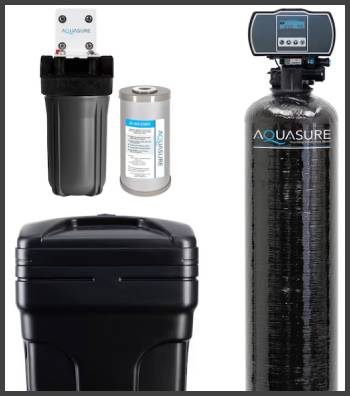
I’ve personally installed Aquasure in my own home and helped a family member set up Fleck at theirs.
So I’ve lived with both day-to-day and watched them work in real-life situations—not just numbers on paper.
Starting with Aquasure, the box came well-organized.
Everything was labeled, and the instruction manual was easy to follow.
Installation took about two hours with basic tools and plumbing know-how.
The unit has a nice, modern digital interface that lets you schedule regenerations and even tweak salt efficiency.
Once installed, the changes were immediate—no more white residue on glassware, and laundry felt noticeably softer.
With Fleck, the story was a bit different.
The setup was more involved.
We ended up calling in a plumber because Fleck’s units, while reliable, aren’t exactly beginner-friendly.
They use either a time-clock or metered valve, and setting it up took more effort.
That said, once it was running, it didn’t disappoint.
Fleck delivered strong, steady water pressure and consistently soft water.
Its no-frills display isn’t pretty, but it works.
And honestly, once you set it, you don’t need to touch it much.
Where Aquasure felt smarter and easier to live with, Fleck gave off that “workhorse” vibe.
It’s the kind of system you install once and forget about for a decade.
But in my daily experience, Aquasure’s efficiency and ease of use made a bigger impact—especially when managing salt, water usage, and flow.
Key Performance Areas That Matter Most
Both systems do their core job well—softening water.
But how they go about it and what that means for you is where things start to differ.
Aquasure excels with its modern design and efficiency.
It regenerates only when needed, based on water usage, and the digital head gives you customization over timing and frequency.
It’s optimized for homes on city water or moderate well systems.
Fleck, on the other hand, feels more durable.
Its valves are legendary in the industry, and it handles high-demand homes with ease.
If you’ve got five people showering, doing laundry, and running a dishwasher daily, Fleck might give you that edge.
Still, Fleck regenerates more traditionally.
Unless you get the higher-end SXT models, you might not get as much control.
And that matters when it comes to salt usage, water savings, and monthly maintenance effort.
Aquasure used about 15% less salt per month in my tracking spreadsheet.
Over a year, that’s a meaningful difference in cost and hassle.
Also, if you’re on well water, Aquasure wins in iron removal.
It handles up to 10 ppm versus Fleck’s usual 6 ppm unless you upgrade or add pre-treatment filters.
Salt Usage Over Time
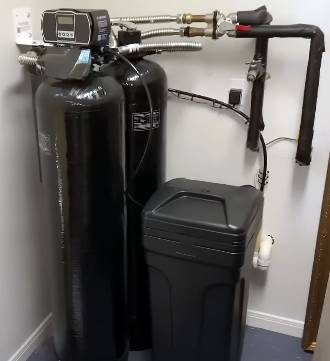
If you’re anything like me, you don’t want to be hauling 40-pound salt bags every couple of weeks.
That’s why I tracked this over a six-month period.
Aquasure impressed me.
It only needed a refill every six to seven weeks.
The metered regeneration really makes a difference, adapting to water usage in real time and minimizing waste.
Fleck needed salt more frequently.
Every four to five weeks was typical.
Part of that is the larger tank size and the slightly more aggressive regeneration settings we had to use to keep up with our family’s demands.
It’s not a dealbreaker, but over time, those extra bags of salt add up in both cost and effort.
If salt efficiency is high on your list, Aquasure offers more peace of mind and less back pain.
Water Quality and Everyday Feel
Here’s where things get subjective—but important.
Because we all know what soft water should feel like.
With Aquasure, the difference was immediate.
Showers felt smoother, and my shampoo actually lathered better.
I had fewer dry skin days, and my laundry came out softer without extra fabric softener.
Fleck also delivered great water quality.
There’s no denying that.
But it took slightly longer to notice the change, especially when it came to skin feel and appliance buildup.
Where I saw the most difference was in spot-free dishes and coffee makers.
Aquasure left zero residue.
Fleck left a faint haze if you looked closely at glassware.
It’s a small detail, but for me, Aquasure just made the water feel “cleaner.”
Performance With Well Water
If you’re on well water like we are at our lake house, Aquasure is just more forgiving.
We often get high iron content during the spring, and Aquasure’s 10 ppm rating means we never had to add an iron filter.
It handled the fluctuations like a champ.
Fleck, while great, struggled during those spikes.
You’d either need to add a pre-filter or risk having rust-colored streaks show up in the toilet or sink.
Aquasure also handled sediment better.
I cleaned out the filter housing once every three months versus Fleck’s monthly check-up.
Less maintenance is always a win in my book.
Ease of Monitoring and Maintenance
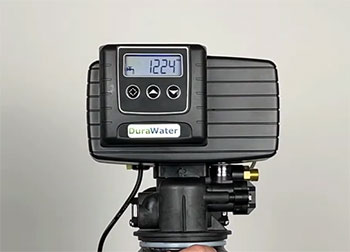
Aquasure’s digital screen shows everything you need—salt level, flow rate, next regeneration cycle.
It’s easy to read and adjust.
Fleck’s display is functional but limited.
And programming it was more of a chore.
You’ll probably need to YouTube a few steps the first time around.
When it came to actual maintenance, both systems were solid.
But I found myself checking on Fleck more often just to make sure it was regenerating properly.
Aquasure felt more “set-it-and-leave-it” with the bonus of better info at a glance.
Long-Term Cost of Ownership
One thing most people don’t talk about when comparing water softeners is the long-term cost.
And honestly, that was a major factor for me. It’s not just the price you pay at checkout—it’s salt usage, potential repairs, replacement parts, and how often you’ll need to maintain or upgrade the unit.
Aquasure came in at a more affordable upfront cost for a comparable grain size. But what stood out even more was how little it cost me month-to-month.
Over the first year, I used fewer bags of salt and didn’t have to replace any parts.
The system just ran clean and efficiently with barely any maintenance outside of topping off salt every month and a half.
Fleck, while built like a tank, cost more upfront and slightly more in salt. Add in the plumber fee for installation, and the total cost climbed higher quickly.
It’s not that Fleck is expensive to operate—it just isn’t as streamlined. Parts are available, but they’re not cheap.
I’ve seen friends replace Fleck valve seals or timers after 5–7 years, which adds up if you’re not handy.
In terms of electricity, both are low-draw and efficient. But Aquasure’s digital control gives you tighter control over regeneration cycles, which saves more water and salt in the long run.
If you’re looking for the best long-term value and low overhead, Aquasure is more wallet-friendly while still giving you reliable performance.
Fleck shines for durability, but expect a little more spend as the years go on.
Also Read: My Thoughts On Culligan Water Softener
Pros and Cons of Aquasure and Fleck Water Softeners
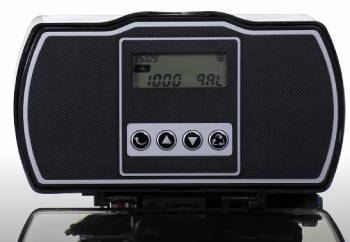
Aquasure Water Softener Pros:
- User-friendly digital interface with smart regeneration
- Excellent iron removal for well water (up to 10 ppm)
- Modern, compact design fits most spaces
- Efficient salt usage with metered settings
- Easier DIY installation
- Affordable for what it offers
- Made in the USA
- Great for small to large families
- Responsive customer service
- Customizable operation schedule
Aquasure Water Softener Cons:
- Shorter warranty compared to Fleck
- May not be ideal for homes with very high water demand
- Newer brand with less long-term data
- Digital head may be too sensitive
- Fewer size and model variations
Fleck Water Softener Pros and Cons
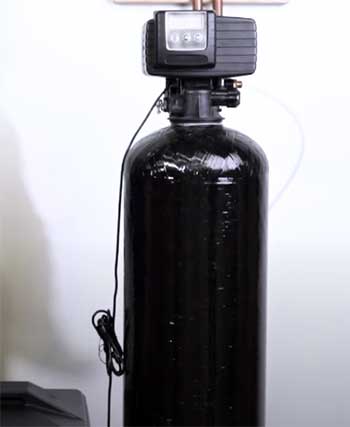
Fleck Water Softener Pros:
- Known for extreme durability and reliability
- Up to 10-year warranty on some tanks
- Handles large families and heavy water usage
- Customizable valves for specific setups
- Works great with well and city water
- Widely used by professionals
- Can pair with advanced filters
- Parts are easy to find
- Consistent soft water delivery
- Set-it-and-forget-it reliability
Fleck Water Softener Cons:
- Installation is not DIY-friendly
- Outdated interface compared to newer brands
- More salt usage unless configured well
- Learning curve with programming settings
- Larger physical footprint
Also Read: My Thoughts On Morton Water Softener
Frequently Asked Questions (FAQs)
Yes. Aquasure is reliable, efficient, and especially good for moderate to high iron levels.
Yes. Fleck is durable and great for heavy water usage, though installation can be more complex.
Yes. Aquasure is designed and assembled in the United States.
With proper maintenance, Aquasure softeners typically last 10 to 15 years.
Final Thoughts
If you want a modern, efficient, and user-friendly softener that won’t break the bank or your back, Aquasure is the winner.
If you need a rugged, time-tested, customizable workhorse that handles massive water loads, Fleck is worth every penny.
In my experience, Aquasure made daily life easier.
Less salt, less babysitting, and slightly better water quality across the board.
That said, Fleck is still a solid choice, especially if you don’t mind a more hands-on approach.
It comes down to whether you want easy efficiency or professional-grade toughness.
